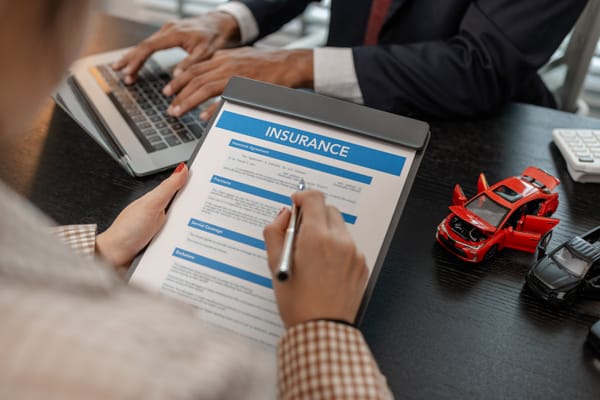What They Don't Tell You About Car Ownership Costs

Owning a car in Nairobi is a major flex. You finally have your own ride. No more queuing for Super Metro pale tao. No more squeezing into a crowded matatu with sleeveless people and sweaty armpits. Life is good!
You budgeted for fuel. You budgeted for insurance. Maybe you even paid cash for the car. Umejipanga.
But then, the bills start hitting different, because the reality is a whole different tune. There are lots of costs you didn’t think were a big deal, but can actually eat your money faster than mabaddie wa Nairobi. Wueh! 🙌🙌
But, chill. We are not here to scare you. We are here to help you plan smarter. At Peach Cars, we believe in being real and giving you the facts.
Let's peel back the layers on the costs nobody wants to talk about.
1. The Real Cost of Keeping Your Car on the Road – Beyond Fuel
Everybody knows fuel is the big one. But the real money goes into keeping the engine purring.
If you ignore maintenance, your budget will suffer a major heart attack. Ignoring issues just means they become major repairs.
Maintenance, Tyres, and Servicing Intervals
A quick oil change is not the whole story. Your car needs consistent care, just like a newborn. Ignoring that little ‘check engine’ light is inviting an expensive headache.
- Routine Servicing: This should happen religiously. For standard Japanese cars, budget for a service every 5,000 to 10,000 km.
- Minor Service: Oil change and filter replacement. Expect to pay Ksh 5,000–8,000, depending on the mechanic.
- Major Service: Includes plugs, transmission fluid, and detailed checks. This can easily jump to Ksh 20,000–50,000, especially for high-mileage or complex cars.
- Tyre Replacement: The rough Kenyan roads are a tyre killer. Tyres wear out faster than you expect due to poor surfaces and heat. A good set of four mid-range tyres costs between Ksh 28,000 and Ksh 80,000. Tyres need replacement every 50,000 to 80,000 km. That is a huge, non-negotiable expense you must plan for.
- Suspension Woes: Potholes are the true national currency, testing your car's suspension daily. Suspension damage is a common and costly issue in Nairobi. Replacing shocks, bushings, and linkages can set you back Ksh 15,000 to 45,000 per repair instance.
Budget Pro Tip: Always choose popular, locally established brands whose spare parts are widely available, competitively priced, and mechanics know them well. A fancy European car might look good, but its spare parts can make your wallet cry.
2. Insurance Clauses You Might Miss
You pay your comprehensive car insurance premiums every year. You feel secure. Buda, yaani umejisort! You assume the policy covers everything from A to Z.
Then an accident happens. When you call the insurer, they hit you with jargon. Suddenly, you have to cough up money before they even start the repair.
What “Excess” and “Own Damage” Actually Mean
Your insurance is not a ‘zero-cost-to-you’ shield. It has terms designed to make you share the risk.
- The Excess: This is the first amount of a claim that you, the policyholder, must pay out-of-pocket. It is your contribution before the insurance company steps in.
- Example: If the damage is Ksh 100,000 and your policy has a Ksh 30,000 excess. You pay the Ksh 30,000. The insurer covers the remaining Ksh 70,000.
- Standard excess rates in Kenya are often 2.5% to 5% of the vehicle’s insured value. For a car insured at Ksh 1 million, that is Ksh 25,000 to Ksh 50,000—a huge shock during a crisis.
- Own Damage: This clause covers damage to your own vehicle. This is the main reason you buy comprehensive insurance. Without it, the policy only covers the other person’s car (Third-Party Liability).
- Special Excesses: Be aware of extra charges. If a driver under 25 or one with less than two years of experience causes an accident, an additional 'Young/Novice Driver' excess is usually applied.
Takeaway: Never choose an insurance policy just because the premium is low. Read the fine print. Ask about the excess amount and consider an 'Excess Protector' cover. This could save you tens of thousands during a claim.
3. Car Tracker Subscriptions and Renewals
You bought your car on loan. The bank insisted on a GPS tracker for security. Good move, right?
What they forget to tell you is that the tracker is a subscription service. It is not a one-time thing.
Why Skipping Renewals Can Lead to Unpleasant Lender Calls
Trackers are a security blanket for both you and your financier. The service must be maintained annually to remain operational and monitored.
The Renewal Fee
After the first year, you must pay an annual renewal fee. This covers:
- The SIM card data
- The 24/7 monitoring service
- Platform access
Expect this to be around Ksh 3,000 to 10,000 per year. Some lenders even charge a monthly maintenance fee.
The Risk of Expiry
If you let the subscription lapse, two major financial risks emerge.
- Lender Intervention: Your bank or Sacco will get an alert when the tracker goes offline. As the car is collateral, they might call you demanding an immediate renewal. Failure to comply can result in warnings, fines, or in extreme cases, the vehicle being remotely immobilised. Lenders take this very seriously.
- Insurance Invalidation: Most comprehensive policies for financed cars have a tracker requirement endorsement. If your car is stolen and the tracker subscription was inactive, the insurer is legally entitled to reject your entire claim on the grounds of breaching the policy terms.
Simply put: A lapsed tracker subscription is like throwing away your insurance policy and upsetting your lender simultaneously. Keep it active!
4. Depreciation Happens Quietly
Depreciation is the silent killer of your car’s value. It is the cost of owning an asset that loses worth the moment you use it. You will only notice it the day you decide to sell your car.
How Each Year and Mileage Bracket Affects Your Resale Value
The value of your car does not just drop; it plummets in the early years. The rate of depreciation is brutal, whether you drive a Vitz or a V8. Note that this applies for newer vehicles, the older the lower the rate of depreciation.
The First Year Hit
A car loses the most value (typically 15-20%) in its first year. This is why buying a new car is a major capital loss initially.
KRA’s Depreciation Schedule
The Kenya Revenue Authority (KRA) uses a specific depreciation schedule to determine the taxable value of imported used cars. This schedule gives a good benchmark for market reality:
- Up to 3 years old: 30% value loss.
- Up to 5 years old: 50% value loss.
- Up to 8 years old: The maximum depreciation capped around 65% to 70%.
(Source: KRA Motor Vehicle Valuation Templates)
The Mileage Factor
Value also drops significantly when the odometer hits certain milestones. A car with over 100,000 km is automatically valued lower than one with 50,000 km, regardless of the age. Buyers perceive high mileage as a higher risk for future major repairs.
Pro-Tip: If your goal is to save money, buy a well-maintained car that has been used for a couple of years. It has already absorbed the heaviest depreciation hit. Its value will now drop more slowly, giving you better resale value later.
Read our full guide on depreciation to understand the financial impact of buying new vs. used cars.
5. Budgeting for Ownership: A Smarter Approach
So, how do you manage all these hidden costs without going broke? The trick is to stop budgeting only for monthly costs and start budgeting annually.
Think of a yearly cost (like insurance or tyres), divide it by 12, and save that money monthly into a dedicated ‘Car Sinking Fund.’ This way, when the big bill hits, you are ready. Hakuna panic!
A Practical Monthly Breakdown Example for a Used Car in Nairobi
Let’s take a reliable used car, a Toyota Vitz (2014 Model), bought for Ksh 850,000, assuming moderate urban usage.
The upfront fuel and insurance cost is only Ksh 13,542 per month. But the true ownership cost is actually Ksh 24,942. That Ksh 11,400 difference is the hidden cost that shocks people. Do not let it shock you. Plan for it.
Note: These figures are aggregated from multiple Kenyan auto maintenance providers, insurance brokers, and financial blogs to represent a fair market average for a popular, mid-range vehicle like a Toyota Vitz.
Your Car Ownership Journey Starts Here
The truth about car ownership is simple: it is not cheap. But with the right knowledge, it is entirely manageable. The most expensive car is the one you were not ready for.
It takes more than a deposit and a logbook to be a smart car owner. It takes a solid plan and a realistic budget. Do not wait for a breakdown to start budgeting for maintenance. Do not wait for a fender-bender to read your insurance policy.
At Peach Cars, we don’t just help you buy or sell — we help you prepare for every part of ownership. Check out our guides and expert tips before your next car move.
Ready to buy or sell a car with full confidence? We inspect every car thoroughly so you know exactly what you’re buying into, maintenance history and all.
Talk to a Peach Cars expert today and get that dream car you’ve been dreaming about!




